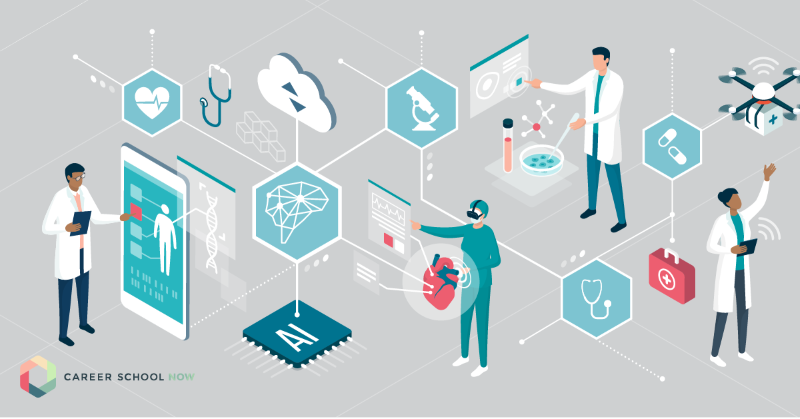The Future of Medical Administration: Fads and Advancements to Watch
The Future of Medical Administration: Fads and Advancements to Watch
Blog Article
Best Practices in Medical Management for Improving Effectiveness and Reducing Costs
In the ever-evolving landscape of healthcare, the quest of ideal methods in medical administration is paramount for boosting efficiency and suppressing expenses. By integrating innovative technologies such as electronic wellness records and telemedicine, doctor can enhance procedures and enhance client care. Nonetheless, technology alone is not a cure all; maximizing source allotment and promoting collaborative communication amongst care teams are equally critical (medical administration). As companies strive to balance quality and cost, what methods should be prioritized to attain these double objectives? The solution to these inquiries hold the key to an extra lasting healthcare system.
Leveraging Advanced Technology
The assimilation of electronic solutions right into health care systems has changed the means facilities run, simplifying processes and improving individual treatment. By streamlining client info, EHRs remove the need for troublesome documentation and help with seamless interaction among health care companies.
Telemedicine is another technological development that has actually transformed individual interaction. It supplies ease for both individuals and medical care experts by making it possible for remote consultations, which can decrease the requirement for in-person visits and enhance visit scheduling. Furthermore, telehealth systems can expand medical care accessibility to rural or underserved locations, bridging spaces in treatment shipment.
Moreover, the usage of Expert system (AI) and machine understanding is coming to be significantly prevalent in anticipating analytics, enabling very early detection of potential health and wellness issues and more enlightened decision-making. These modern technologies, when incorporated effectively, can improve diagnostic precision and personalize person treatment strategies, ultimately causing boosted healthcare outcomes and operational performance.
Optimizing Source Allocation
By strategically taking care of resources such as personnel, tools, and financial resources, medical care facilities can substantially boost their operational efficiency, improve person end results, and reduce unneeded expenditures. The very first step in enhancing resource allocation entails conducting a detailed evaluation of present properties and recognizing locations where sources may be underutilized or exhausted.
Focusing on resource allotment based on individual demands and service needs is essential. This includes lining up resources with high-demand locations, such as emergency situation treatment or specialized therapies, to make certain prompt and efficient individual care. Implementing adaptable staffing models can also optimize labor sources by readjusting personnel allowance in response to rising and fall client quantities. In addition, embracing telemedicine and various other technological remedies can ease physical resource restrictions by providing different avenues for patient-provider interactions.
Financial sources need to be thoroughly checked and assigned with critical insight to support both short-term functional needs and lasting institutional goals. This consists of investing in training programs that boost team proficiencies and taking on energy-efficient techniques that decrease functional costs (medical administration). Ultimately, an optimized resource allowance method promotes a lasting healthcare environment that is receptive, reliable, and economically sensible
Streamlining Process Processes
When health care centers goal to enhance operational effectiveness, enhancing operations processes comes to be a crucial emphasis. Effective workflows decrease redundancy, get rid of unneeded steps, and enhance coordination among health care specialists. This approach not only accelerates solution delivery yet likewise boosts the quality of individual treatment.

Next, innovation integration plays a significant duty in simplifying process. Executing digital health and wellness records (EHRs) and digital medical professional order entrance (CPOE) systems minimizes documentation, decreases human error, and makes certain details is obtainable to all appropriate personnel. Additionally, leveraging telemedicine platforms can enhance person assessments and follow-ups, lowering the stress on physical facilities.

Inevitably, streamlined operations result in cost decreases and boosted client fulfillment, promoting an extra sustainable medical care atmosphere.
Enhancing Data Management
Building upon streamlined process, maximizing information monitoring ends up being an important element beforehand healthcare management. Effective information management systems are critical for keeping precise person records, boosting decision-making, and making sure compliance with regulative requirements. By executing durable information management services, medical care centers can enhance the high quality of patient treatment while at the same time decreasing functional costs.
One key element of enhancing information monitoring is the combination of advanced digital health record (EHR) systems. These systems promote the seamless exchange of patient details across various divisions, reducing duplication of tests and reducing mistakes. A well-designed EHR system supports information analytics, allowing healthcare service providers to identify trends and make educated choices regarding person care.
Furthermore, protecting individual information is paramount. Taking on thorough cybersecurity actions, consisting of file encryption and normal audits, makes sure the integrity and privacy of delicate information. This not why not look here only secures patients but additionally preserves the organization's online reputation.
Purchasing team training is another vital variable. Enlightening healthcare specialists on data administration practices improves their capability to efficiently use innovation, resulting in enhanced patient results. Finally, boosting data management with advanced technology and extensive training is essential for achieving effectiveness and cost decrease in medical management.
Fostering Collaborative Communication
A vital component beforehand medical administration is promoting joint interaction amongst healthcare specialists. Effective interaction is paramount for ensuring smooth patient treatment, enhancing treatment outcomes, and lessening mistakes. By motivating open dialogue and control across multidisciplinary teams, health care organizations can improve their functional performance and decrease unnecessary prices.
Central to this strategy is the combination of interaction technologies such as digital health and wellness documents (EHRs) and safe messaging systems, which help with the rapid exchange of crucial person info. These devices allow medical care suppliers to accessibility and share information in actual time, making sure that all employee are read this notified and straightened in their decision-making procedures. Regular team meetings and interdisciplinary rounds can additionally advertise a culture of partnership and accountability.
Educating programs focused on enhancing interaction abilities are also essential. These programs can aid team create the capability to communicate info clearly and listen proactively, therefore lowering misunderstandings and cultivating a supportive workplace. On top of that, adopting standard interaction methods, such as SBAR (Circumstance, Background, Analysis, Recommendation), can improve the exchange of info, ensuring that vital details are shared succinctly and efficiently. Inevitably, fostering collaborative interaction leads to boosted medical care shipment and price savings (medical administration).

Final Thought
Integrating innovative technology, such as digital wellness documents and telemedicine, along with enhanced source allowance and streamlined process procedures, is important for enhancing efficiency in clinical management. Effective information monitoring and promoting collaborative communication among medical care groups are critical for lessening redundancies and boosting treatment top quality. By prioritizing precautionary treatment and participating in high quality renovation initiatives, medical care companies can achieve considerable expense savings and click here for more improved patient outcomes, thus guaranteeing sustainable healthcare delivery in an increasingly intricate atmosphere.
Report this page